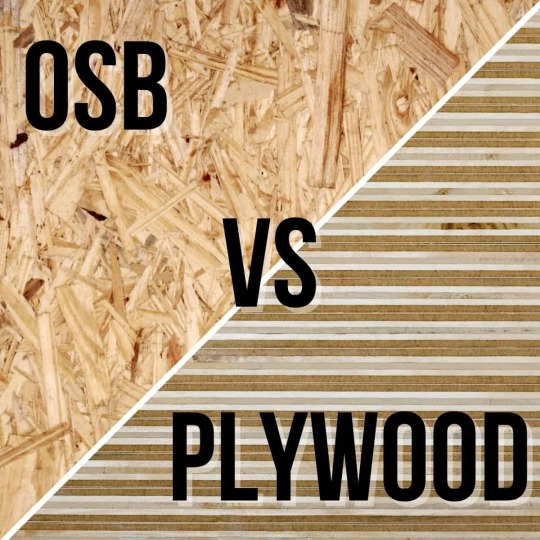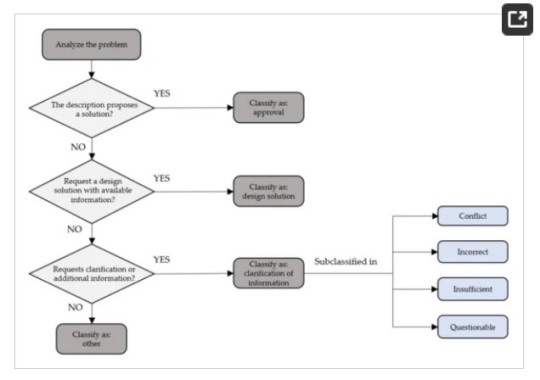#Building Technology
Text
Scientists develop game-changing 'glass brick' that could revolutionize construction: 'The highest insulating performance'
2 notes
·
View notes
Text
Revolutionizing Construction Projects: The Power of Drawing Management Software
Revolutionizing Construction Projects: The Power of Drawing Management Software
Construction drawing management software is essential for Architects, Construction Managers, and Contractors to organize, track, and share plans across multiple building phases. Construction drawing management done right ensures accuracy, efficiency, and collaboration between teams to reduce errors, streamline communication, and improve project timelines.

Introduction.
Construction drawing management relates to a coordinated handling of plans for the entire project lifecycle. It incorporates organization, storage, retrieval, and distribution of architectural, structural, and MEP drawings to ensure communication and collaboration between project participants. Use of customized construction drawing management software improves document control, file versioning, annotation and markup, and revision tracking. Centralized access to accurate and updated drawings augments efficiency, lowers errors, improves team coordination, and fosters successful project execution within planned budget and schedules.
Importance of efficient construction drawing management in construction projects.
Effective construction drawing management with construction drawing software is paramount to ensure accuracy, collaboration, and quick project execution. It simplifies communication between project participants, reduces errors, expedites decision-making, and improves coordination. Organized and centralized drawings optimize workflow, increase productivity, and contribute to high-quality project outcomes.
Overview of the article's focus on the transformative power of construction drawing management software.
Drawing management software enhances construction projects by organizing, centralizing, and streamlining drawings. It improves accuracy, collaboration, and efficiency leading to refined workflows, faster decision-making, and positive project outcomes.
The Challenges of Traditional Construction Drawing Management.
Traditional construction drawing management raises various roadblocks that include manual updates, version control issues, revision tracking problems, and limited file access. These obstacles lead to ambiguities, errors, and delays impeding the collaboration and efficiency within construction projects.
Inefficiencies in manual processes :
Traditional construction drawing management software depends on manual processes that lead to discrepancies in version control, time-consuming updates, and file tracking issues. These challenges result in errors, delays, and misperceptions leading to collaboration issues between project participants. Manual processes lack accuracy and agility to keep projects within budget and on schedule emphasizing the need for automated and structured construction drawing management solutions.
Risks of errors and miscommunications :
Legacy drawing management techniques lead to significant challenges that create errors and confusion. Limited drawing accessibility while relying on paper-based copies stored in cabinets or unplanned shared drives with restricted access pose risks of miscommunication and errors. Additionally, manual processes are prone to inefficiencies and delays that consume resources and time. Furthermore, coordinating changes amongst project participants becomes complex and time-consuming that impacts budgets and timelines.
Time and resource constraints :
In addition to miscommunication and errors, traditional drawing management leads to resource and time constraints based on several factors. Manual processes like printing, distribution, and physical storage of drawings are time consuming and require multiple resources. Coordinating changes and updates between stakeholders through manual processes leads to issues in decision-making and implementation that impacts project timelines. Retrieval of specific drawings from unorganized digital folders is time-consuming and hinders efficiency and productivity. These challenges highlight the need to deploy construction drawing management software that reduces time and resources in construction projects.
Understanding Construction Drawing Management Software
Construction drawing management software simplifies organization, storage, and distribution of construction drawings that is significant for effective construction execution. It centralizes drawing access and facilitates collaboration between stakeholders to reduce errors. Its features include version control, markup tools, and document tracking to ensure accuracy and clarity for the entire project lifecycle. Digitized workflows and process automation saves time and resources spent on manual tasks. It improves communication with real-time updates and seamless information sharing between various teams. Ultimately, construction drawing management software is crucial to optimizing efficiency, lowering risks, and producing successful project results.
How Drawing Management Software Enhances Efficiency
Centralized storage and accessibility of drawings
Collaboration and communication tools
Version control and revision tracking
Integration with other project management tools
Cost and time savings for construction projects
Addressing Common Concerns and Implementation Challenges
Security and data integrity
Training and adoption by project teams
Compatibility with existing workflows and systems
Strategies for successful implementation and overcoming resistance to change
The Future of Construction Drawing Management
The future of construction drawing software is set for transformation through Artificial Intelligence - AI and Machine Learning – ML. AI algorithms will change document management through task automation using drawing recognition, quality control, and change detection. ML capabilities enhance predictive analytics, risk forecasting, and workflow optimization. These technologies improve collaboration, streamline processes, and enhance decision-making. Additionally, AI-driven insights drive innovation allowing adaptive and responsive project management. Ultimately, construction drawing management software reinforced by AI and ML will build a new era of accuracy, innovation, and efficiency within the AEC industry.
Conclusion
In conclusion, the use of construction drawing management software will create a radical change in project management, driving construction projects towards extraordinary project success. Centralized document management will enhance collaboration and advanced tools like AI and ML will streamline workflows, reduce risks, and foster innovation. It will empower teams to work smarter, make informed decisions, and handover projects within budget and time. As the construction industry continues to embrace digital evolution, the power of advanced construction drawing management software will become evident setting new standards of accuracy and efficiency within the built environment.
Visit : www.ifieldsmart.com/construction-drawing-management-software
#Construction drawing management software#2D construction drawing management software#Construction drawing software#Construction drawing management#2D Construction drawing Software#3D Construction drawing Software#Construction drawing Software#Construction drawing#drawing software#Civil#civil engineering#civil industry#construction management software#architects#architectural design#architectdesign#building technology
0 notes
Text
Plywood Sheathing vs OSB: Which is Better?
When it comes to choosing between plywood and OSB (Oriented Strand Board), builders often grapple with the issue of durability. OSB, with its appearance and composition resembling a collection of wood chips glued together, has faced criticism centered on its potential to fall apart. This critique echoes a familiar sentiment, reminiscent of the early days when plywood faced similar skepticism due…

View On WordPress
0 notes
Text
0 notes
Text
[OTS in House] The Ultimate Guide to Optimizing Your Space with Open to Sky Design
Discover the benefits and key features of OTS (Open to Sky) in House design in this comprehensive guide. Learn how to optimize your space with OTS technology.
The Ultimate Guide to Optimizing Your Space with Open to Sky Design
OTS meaning in House Plan
Open to Sky (OTS) is a concept that is becoming increasingly popular in modern-day architecture and home design. An OTS house plan refers to a…

View On WordPress
#Architecture#Building Technology#Design#Home Improvement#Open To Sky#OTS Full Form#Ots in Construction#OTS in House#real estate#Space Optimization
0 notes
Text
Mitigating earthquake damage the Japanese way 👏🏾👏🏾💪🏾
0 notes
Text
| Engineering News-Record
| Engineering News-Record
This website requires certain cookies to work and uses other cookies to help you have the best experience. By visiting this website, certain cookies have already been set, which you may delete and block. By closing this message or continuing to use our site, you agree to the use of cookies. Visit our updated privacy and cookie policy to learn more.
This Website Uses…

View On WordPress
#architecture#BNP Media#bridge construction#building collapse#building renovation#building technology#buildings#construction#construction news#engineering#Engineering News-Record#ENR#enr.com#environmental design#highway construction#News
0 notes
Text



💜💿 ~ Life Flow ~ 💿💜 (choisonny)
(Credit if you use) (ko-fi)
#rainbows#technology#LED lights#pc build#custom build#techcore#pretty lights#pretty gifs#tech stim#tech#purple and blue#blue and purple#blacklight#black light#neon#glowing#rainbow#rainbow lights#led lights#rainbow leds#neon colors#stim#tw pulsing lights#slight flashing#flashing lights#glowing lights#rainbow aesthetic#rainbowcore#rainbowwave#LEDs
458 notes
·
View notes
Text

Hitachi (1985)
#vcr#vhs#video#technology#new york city#new york#nyc#world trade center#wtc#empire state building#1980s#80s#80's#1985
1K notes
·
View notes
Text
Lowkey, I think one of my favorite little things about Rescue Bots is how we get to learn a little more about Optimus when he shows up. Like, not war stuff or Orion Pax stuff, but just little things about Optimus.
One of his favorite Earth stories is The Little Engine That Could. Does he read in his spare time and if so, how did he find Little Engine?
He tells Heatwave that he has also been learning from humans. What has he learned? The phrase "Nothing much, double dutch." Who the fuck taught him that? My money's on Miko. Jack would not have the audacity to add that to Prime's vernacular.
He has a motherfuckin' rocket powered car carrier capable of hauling four bots. And since Team Prime had four four-wheelers on the team prior to Darkness Rising, you could reasonably assume that he has used it with Cliff, Bee, Bulk, and Ratch
Optimus knows what a pogo stick is. That isn't anything noteworthy, I just think it's funny.
#transformers#rescue bots#tfp#optimus prime#rescue bots is so funny in the context of tfp and the greater aligned continuity#dinosaurs are still alive and optimus could turn into one prior to getting blown up with the base#optimus and bumblebee have canonically traveled to the past and to an alternate timeline#mech spent so long trying to build their own transformer only for some semi immortal dickhead to do it on his own with relative ease#triple and *quadruple* changers are canon to the aligned continuity#bumblebee almost succumbed to an alien pathogen and optimus (and maybe ratchet) was the only one who knew#shrink ray technology is canon and it was never used on the decepticons#team prime probably thought they were the last of the autobots but optimus and bee knew at least *nine* other bots on earth#eight if you don't want to count servo#but why wouldn't you count him?#optimus has driven across the sea floor after dramatically declaring he doesn't need a boat#laserbeak canonically becomes an autobot at the end of rescue bots academy
954 notes
·
View notes
Text
Vanka Yuncheng Building in Shenzhen via kimlalinx
#cyberpunk#tech#technology#skyscraper#buildings#architecture#china#shenzhen#futurism#futuristic#scifi#glow#glowy#aesthetic
86 notes
·
View notes
Text
Mastering Construction Projects with RFI Software: A Comprehensive Guide
Mastering Construction Projects with RFI Software: A Comprehensive Guide
In the paced world of construction, where meeting deadlines and maintaining accuracy are crucial, effective communication and efficient processes play a role in achieving success. Among the tools used in project management one tool stands out as a game changer; RFI Construction software. This guide delves into the realm of RFI software examining its features, advantages and how it can transform construction project management.
According to a recent study, the typical quantity of RF's for a singular project may exceed 750.

Exploring RFI Software
RFI software, also referred to as Request for Information software, is a solution designed to streamline the RFI (Request for Information) process in construction projects. RFIs are documents used to clarify specifications address discrepancies and resolve issues during construction.
Traditionally managing RFIs involved paperwork, numerous emails and manual monitoring systems that often led to inefficiencies and mistakes. RFI software. Centralizes this process enabling stakeholders to efficiently submit, monitor and handle RFIs.
Construction RFI Tracking Software: Enhancing Communication Channels
Effective communication lies at the core of every construction project. Construction RFI Tracking Software acts as a conduit that links stakeholders throughout the project landscape – from architects and engineers to contractors and subcontractors.
By offering a system for submitting and monitoring RFIs this software guarantees that everyone involved stays up to date with the up-to-date information and changes instantly. Whether dealing with design modifications, conflict resolutions. Seeking clarifications on specifications, RFI software simplifies communication channels, cutting down on delays and avoiding misinterpretations.
Key Features of RFI Construction Management Software
RFI Construction Management Software offers several features designed to increase project efficiency and productivity:
Document Management: Storage and organization of project documents, including drawings, specifications, and contracts, for easy access and version control.
Business process: Automated routing and approval workflows for RFIs, speeding up the investigation response process and reducing bottlenecks.
Reporting and Analytics: Real-time reporting and analytics tools to track RFI progress, monitor response time, and identify areas for improvement.
Integration capabilities: Easy integration with other construction management software solutions, such as project scheduling and budgeting tools, creates a unified project management ecosystem.
By using these features, construction companies can streamline their operations, reduce project risk, and deliver projects on time and on budget.

RFI analysis – Flowchart
Choosing the right RFI software for your project
Choosing the right RFI software for your construction project is important. Consider the following:
Specific Requirements: Identify the specific requirements of your project and ensure that the software is compatible with your operations and policies.
Budget: Determine the cost-effectiveness of the software solution by considering up-front costs and long-term benefits.
Scalability: Choose a solution that can scale with the growth of your project and adapt to changing needs.
User Experience: Choose an intuitive interface that makes it easy to use and encourages user engagement.
Customer Support: Ensure that the software provider provides excellent customer support and timely support when needed.
By carefully considering these factors, you can make an informed decision and choose the RFI software solution that best suits your business needs.
The average review and response time for a single RFI is more than 7.5 hours.
The impact of RFI software on the construction industry
Hosted RFI software has a significant impact on construction projects, empowering teams to:
Increase efficiency: Streamlined communication and automated workflows accelerate the resolution of RFIs, reduce project delays and increase overall efficiency.
Improve collaboration: Having ubiquitous access to project information allows stakeholders to work together, leading to better decision-making and project efficiency.
Achieve risk reduction: Timely problem identification and resolution through RFI software helps reduce project risk and ensures compliance with regulations and standards.
Based on a study, it takes more than 9 days to wait for a single RFI response.
Future trends of RFI construction software integrated by AI and ML
Soon, AI and Machine Learning will really change how RFI construction software works. AI will look at old data to see problems coming, so they can be fixed before getting big. Machine Learning will make the RFI process smoother by doing boring tasks itself and giving smart ideas based on current project info.
NLP (Natural Language Processing) algorithms will understand RFI requests better, giving faster replies. In short, AI and Machine Learning in RFI software will make construction projects way more efficient, accurate, and innovative.
Conclusion
In conclusion, RFI Construction Management Software has emerged as a transformational tool in the construction industry, enabling easier communication, improved collaboration, and improved project efficiency. By investing in the right RFI software solutions, construction companies can stay ahead of the curve and deliver successful services on time and within budget.
Whether you are a small contractor or a large construction company, adopting RFI Construction Software can transform the way you manage your projects, resulting in more productivity, fewer delays, and happier clients. With the right tools at your disposal, mastering construction projects has never been more achievable.
Visit : www.ifieldsmart.com/rfi
#RFI Construction Software#RFI Software#Construction RFI Tracking Software#RFI Construction Management Software#construction management software#construction#civil industry#civil engineering#civil#architects#architectural design#building technology
0 notes
Text
What is Acoustical Insulation?
In the bustling rhythm of urban life, where the symphony of city sounds orchestrates our daily routines, the concept of acoustic insulation emerges as a crucial element in architectural design. Acoustic insulation, also known as soundproofing, plays a vital role in creating spaces that offer tranquility, privacy, and enhanced well-being for occupants. In this article, we delve into the…

View On WordPress
#building acoustics#building materials#building technology#construction materials#construction technology
0 notes
Text
#building#building tech#building technology#construction#kosma harasimowicz#kosmaharasimowicz#realestate
0 notes
Text
Prompt 260
You know what could be a really funny and fun crossover? Especially with my constant dragon AUs? Danny Phantom and Wakfu.
See, Danny and Tucker have decided to reincarnate together, almost like a vacation after reaching the age of 100. But see, they let Sam choose where they were going to be hanging out for the next however long, for fun!
And see, she saw world full of plants and life and an utter asshole trying to destroy a plant-person city what the fuck- and she tosses their souls into that world right away.
Now see, they didn’t really have any request about their reincarnation except that they were able to stick together. And what better way than for them to come from the same egg! Okay so maybe they arrived a little early- thank you Clockwork- but it’ll take a while to hatch anyway.
Okay, so maybe they’ve hatched alone, but that’s also fine! Sure for literal babies probably not, but they know how to do stuff- mostly. They’ll figure it out! Besides, Tucker is a freaking dragon now, and that’s so cool! And Danny has these cool wing-horns and mini portals too! Sure it’s currently only for this world, but still!
It’ll be fun, and honestly they know how to survive a desert! Mostly!
#Prompts#Danny Phantom Crossover#Wakfu Crossover#Tucker deserves to be (eventually big) serpentine dragon with a cobra hood & several horns#Danny & Tucker know technology & will figure out how to mix it with magic#Yes there is a random pair of children in the middle of the desert#Yes it is incredibly concerning#Tucker discovered his sand control means he can create most computer chips a while ago#Danny Fenton can build so many things from borderline nothing#They’ll figure it out eventually#Until then they get to enjoy being feral siblings#Tucker is delighted in the shapeshifting ability & uses it to hide the fact he’s a dragon#They have matching cloaks/hats to hide their horns#There are definitely several people concerned about the pair of desert children-toddlers they see sometimes
75 notes
·
View notes
Text





The Marshall Field and Company Building is known for its two exterior clocks, which weigh about 7.5 short tons (6.7 long tons) each, on its northwest and southwest corners along State Street at both Randolph and Washington Streets. The southwest clock at the original Washington Street intersection, known as “The Great Clock”, was installed on November 26, 1897.
#Marshall Field and Company Building#The Great Clock#installed#Chicago#26 November 1897#original photography#2014#tourist attraction#USA#landmark#cityscape#vacation#travel#Illinois#Marshall Field's Clock#close up#technology#Midwestern USA#Great Lakes Region#2019#summer 2016#US history#anniversary#architecture#111 North State Street
137 notes
·
View notes